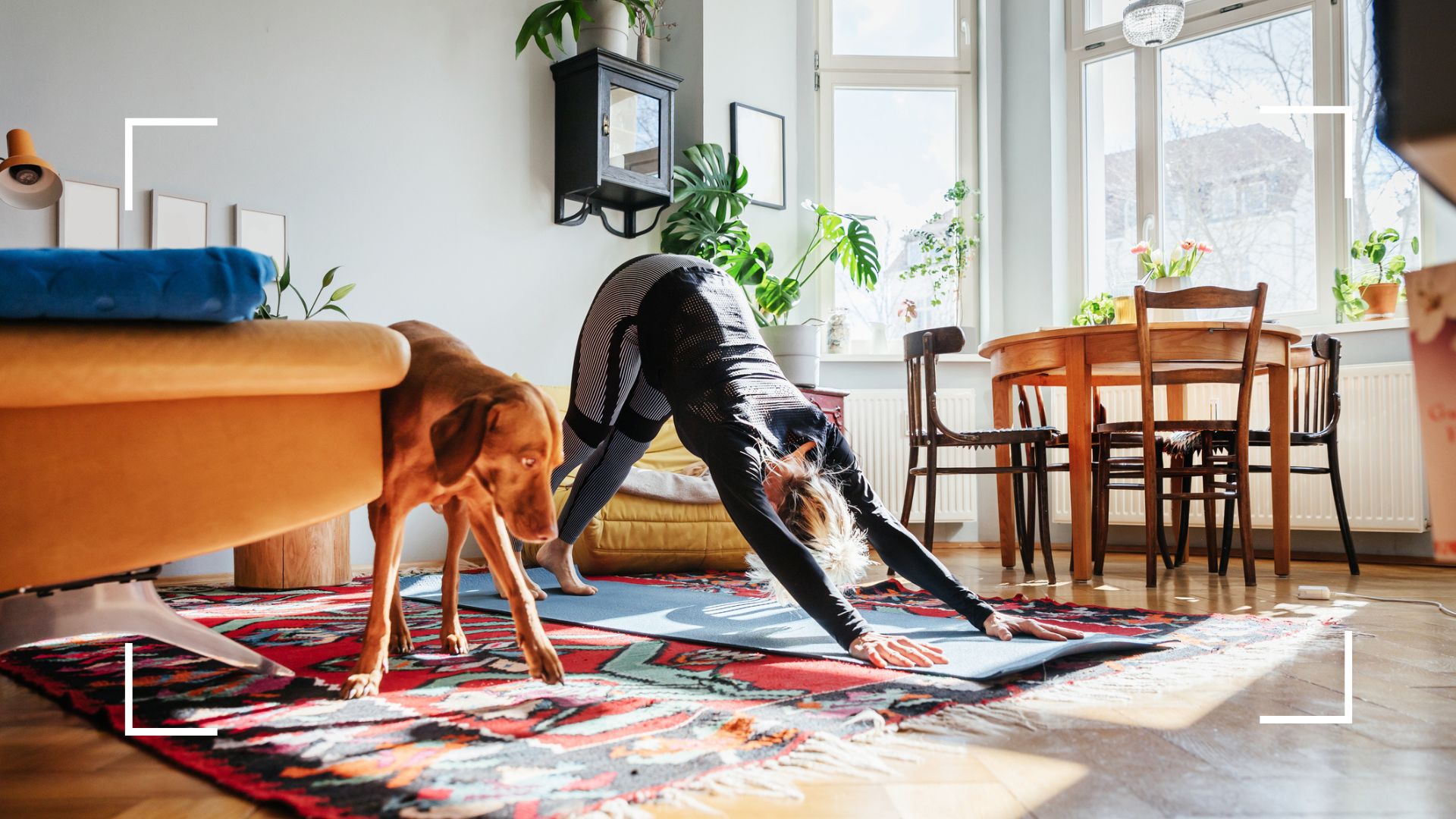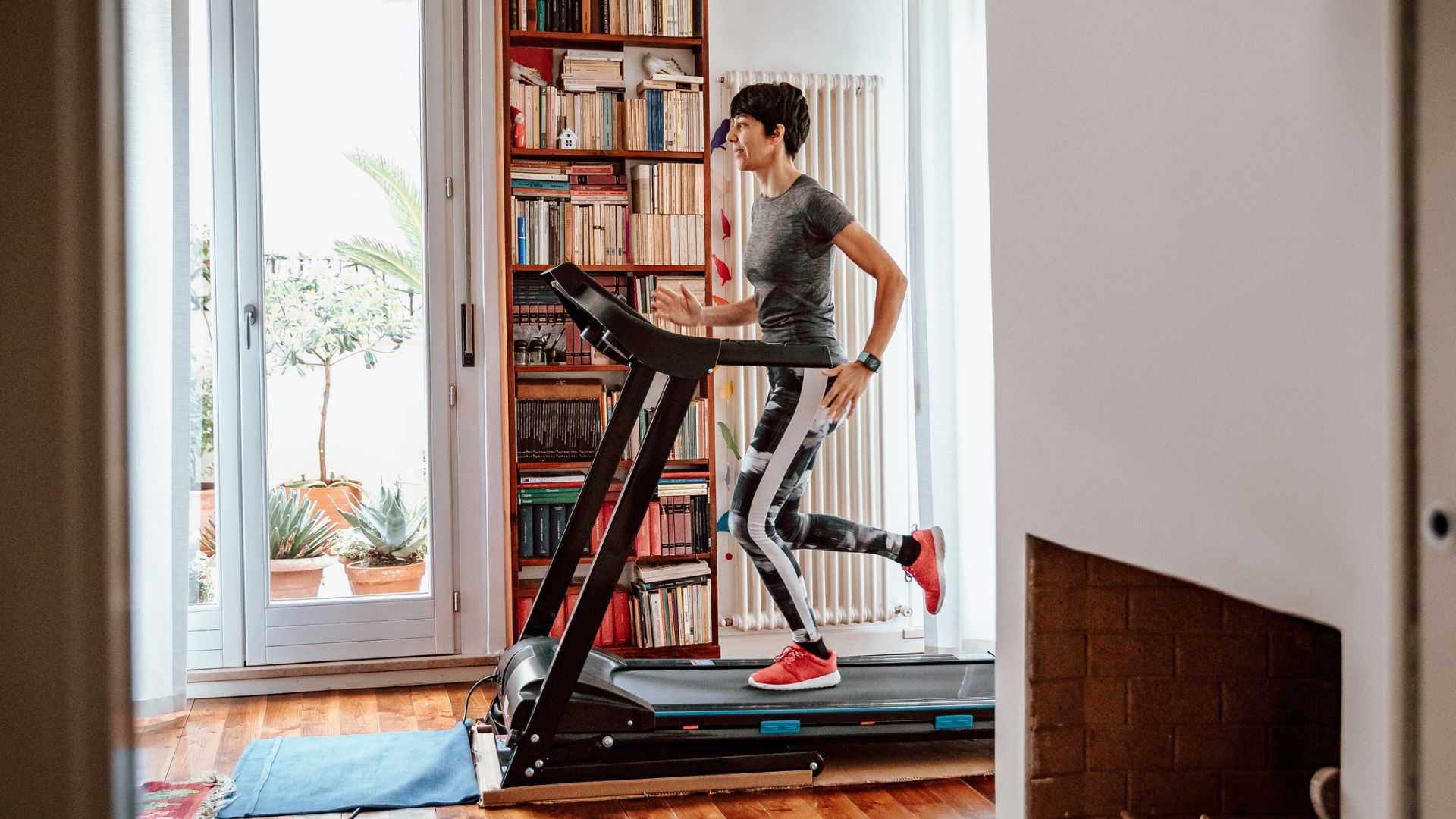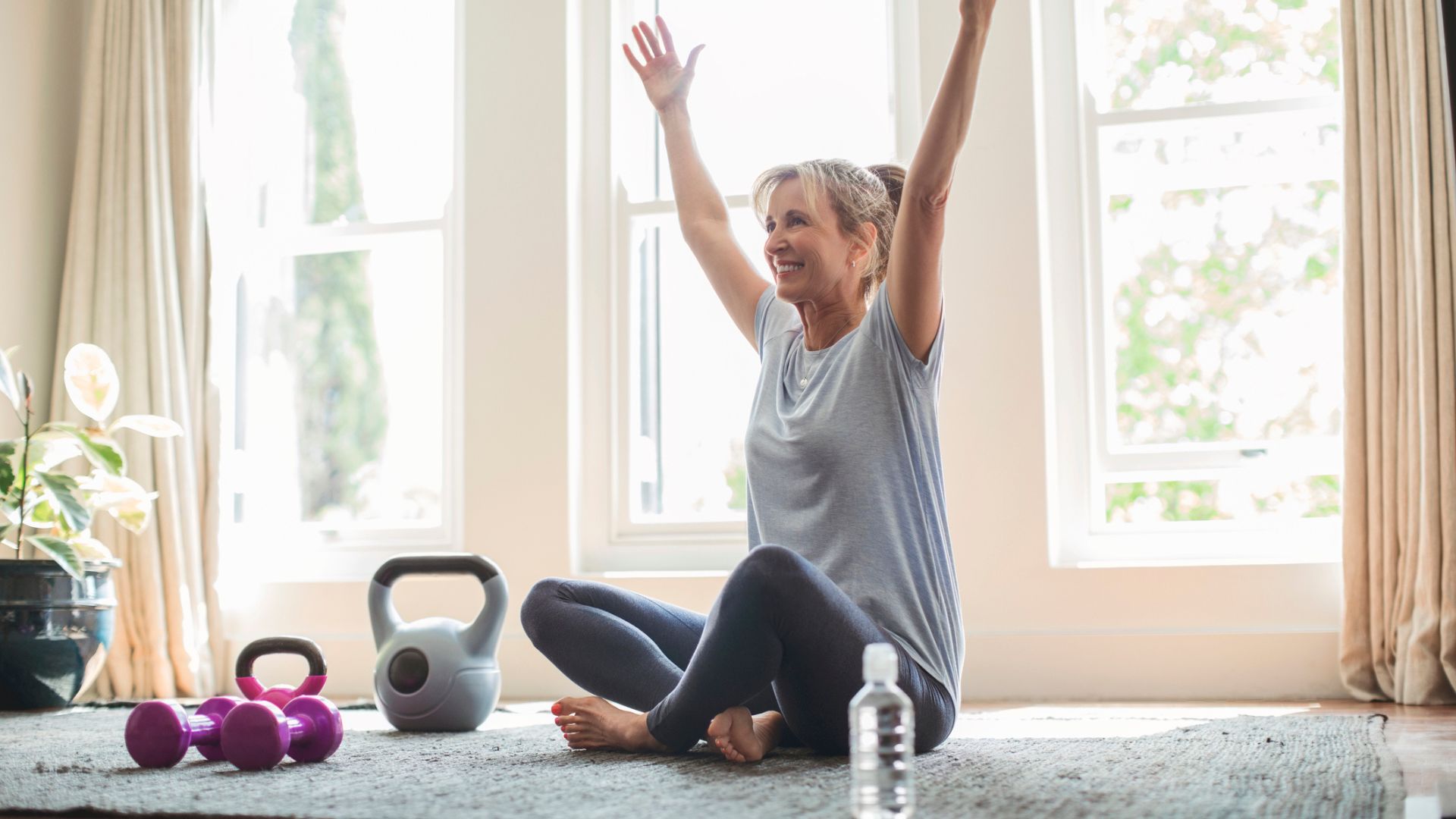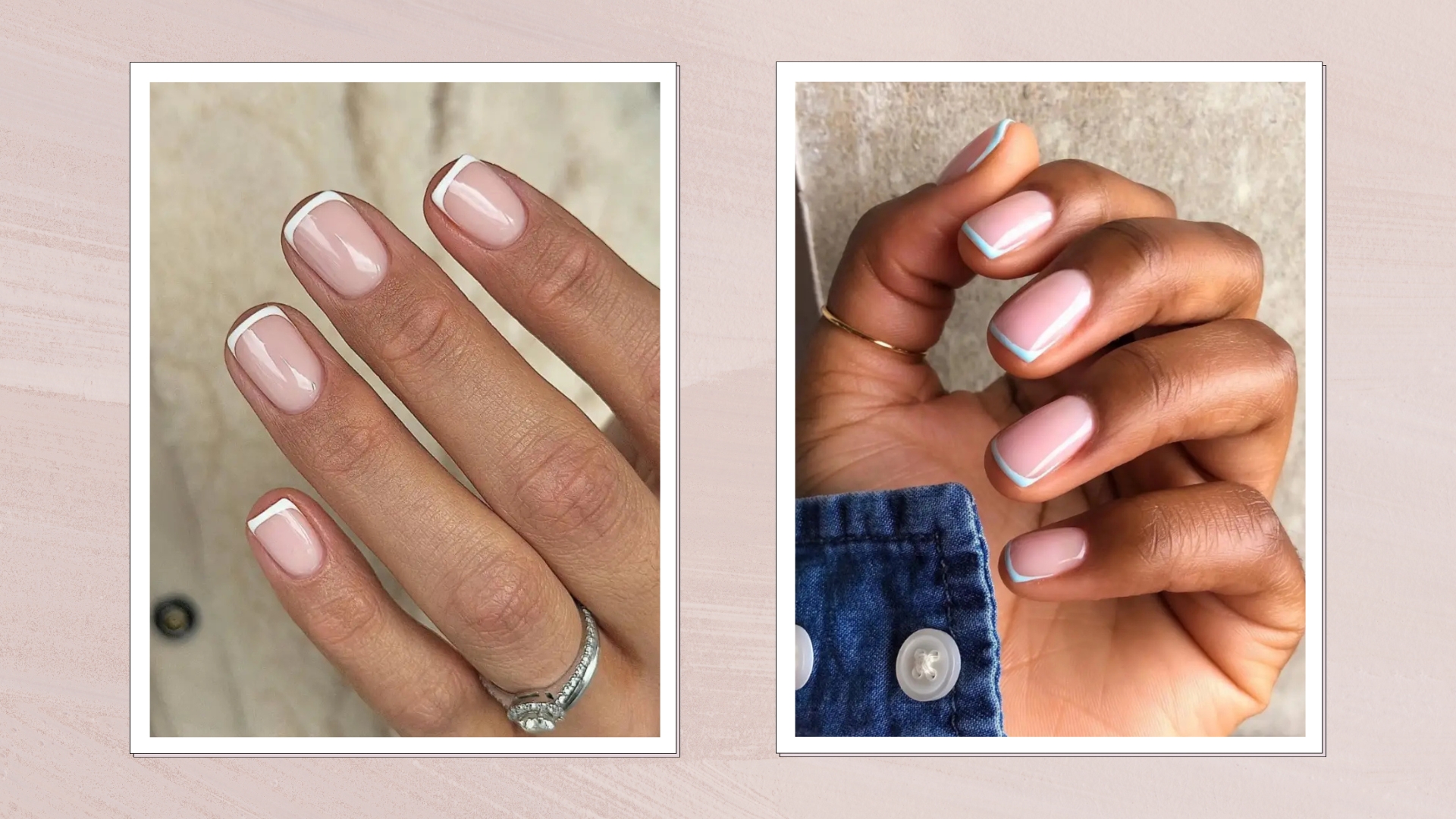What is cosy cardio? Personal trainer explains how to do this gentle exercise routine
Cosy cardio is a viral TikTok workout we can get on board with, promoting low-impact exercise and its benefits for everyone, regardless of age or ability


Cosy cardio is the latest workout trend to sweep social media - and we're hardly surprised. It can be done from the comfort of your own living room with as much or as little equipment as you like and it has plenty of benefits for your mental and physical health.
Whilst we're often sceptical here at woman&home of workouts made for views on platforms like TikTok, creator Hope Zuckerbrow (@hope_zuckerbrow)'s cosy cardio routine is something a little different. She took to the app to share her morning exercise routine in a bid to show that exercise doesn't have to be intense for it to be effective and that it should be something to enjoy rather than endure.
It's hardly surprising that the routine has gone viral, with 1.7m views under the American creator's hashtag, considering that most of us would likely prefer a more relaxed approach to exercise. If you want to jump on this trend that follows in the footsteps of others like soft hiking and the 12-3-30 workout, we've got you covered. Here, woman&home speaks to a certified personal trainer to reveal all you need to know about cosy cardio, what it really is, its benefits, and importantly, how you can do it at home.
What is cosy cardio?
Cosy cardio is essentially low-intensity interval training (also known as LIIT), a gentler and more sustainable approach in comparison to its sister workout, high-intensity interval training (HIIT). "LIIT involves alternating between periods of low to moderate intensity exercise and periods of red or lower activity, which allows individuals to work out without pushing themselves to the limits, making it a suitable choice for various fitness levels and age groups," says personal trainer Lucie Cowan.
The main difference between cosy cardio, as created by Zuckerbrow, and LIIT is that the former prioritizes comfort and self-care during the workouts. That comes in the form of entertainment during the session, like your favourite television program or podcast, a gentle and relaxing environment (lighting a candle and keeping the lights low, for example) and keeping the pace steady.
"Instead of pushing for high intensity and heavy sweating, cosy cardio encourages individuals to engage in activities that make them feel good while still getting their heart rate up," says Cowan, who is also a master trainer at Third Space. "This could involve activities like brisk walking, gentle cycling, dancing, or even yoga."

While there's plenty of benefit to more intense workouts, such as the fellow viral 25-7-2 StairMaster workout and walking at a faster pace, by shifting your workouts to include more LIIT you're opening yourself up to an alternative approach to exercise. It's an approach, Cowan says, that could work better for you in the long term.
Sign up for the woman&home newsletter
Sign up to our free daily email for the latest royal and entertainment news, interesting opinion, expert advice on styling and beauty trends, and no-nonsense guides to the health and wellness questions you want answered.
"[Cosy cardio] could align better with your wellbeing and lifestyle, helping you to feel empowered to engage in activity that suits your individual needs, and making fitness a sustainable and enjoyable part of your life," she says.
How effective is cosy cardio?
Lower-impact and slower-space exercise often get a bad name, especially with all the hype around high-intensity exercise programmes in recent years. However, Cowan is quick to assure us that cosy cardio and LIIT is an incredibly effective way to exercise. Here's why:
1. It's sustainable
Consistency is key when it comes to making progress with exercise - regardless of your goal. The great thing about cosy cardio is that it doesn't put so much pressure on the body that you need rest day after rest day to recover from a single session. It's a lot more sustainable than some other workouts.
"Unlike high-intensity workouts that can lead to burnout or overtraining, LIIT allows you to engage in regular exercise without pushing your body to extremes. This makes it easier, and more likely, that you will be able to stick to your fitness routine consistently," says Cowan.
2. There's a reduced risk of injury
If you struggle with lower back pain or any knee issues, taking cycling as a workout or running every day off the table, cosy cardio could be for you. "LIIT places less stress on joints and muscles compared to high-impact, high-intensity exercises," she says. "The controlled and gentle nature of LIIT reduces the risk of injuries, making it a suitable choice for individuals who have joint issues, are recovering from injuries, or are new to exercise."
Plus, LIIT workouts are a form of rest and recovery in themselves. "The lower-intensity intervals in LIIT provide a form of active rest, allowing the body to recover while still remaining in motion. This can aid in reducing muscle soreness and enhancing overall recovery."
3. Cosy cardio is an adaptable workout
Whether you're coming off the back of a marathon or just learning how to get fit, cosy cardio can be for you. "LIIT workouts, like cosy cardio, can be tailored to different fitness levels," the trainer explains. "You can adjust the intensity and duration of each interval to match your capabilities. This makes the workout an inclusive and accessible training option, available to a wide range of individuals."
4. There are plenty of cardiovascular benefits
Low-intensity exercise isn't particularly known for its cardio benefits but Cowan says LIIT offers plenty of heart health-boosting properties, without the need to push yourself to the max. "The alternating periods of low and moderate intensity keep the heart engaged and improve cardiovascular health over time," she says.
Plus, cosy cardio and LIIT are excellent for enhancing muscular endurance - and the heart is a muscle too, after all. "It engages muscles for extended periods without causing excessive fatigue," she says. "This can be particularly beneficial for activities that require endurance, such as daily tasks or recreational sports."
5. Cosy cardio can help you lose weight
Learning how to lose weight without exercise is a delicate balance of increasing your daily movement goals and lowering your calorie intake. Cosy cardio can help you do this, says the trainer.
"LIIT encourages the body to tap into fat stores for energy during low-intensity periods. This can contribute to fat loss and weight management, particularly when combined with a balanced diet."
6. It can help you deal with stress
One of the key benefits of working out is the boost it gives to our minds, ideal if you're looking to learn how to deal with stress or recover from burnout. "The lower intensity of LIIT can have a calming effect on the body, making it an excellent option for stress reduction. Gentle movement and controlled breathing can also help lower cortisol and promote relaxation."

How to practice cosy cardio
While Zuckerbrow focuses on walking as a workout in her videos online, there are a variety of other easy cardio exercises to help utilise the key elements of cosy cardio within your workout if you don't have this type of equipment.
1. Bodyweight exercises
Take bodyweight exercises, for example. These are an essential part of strength training for beginners and include movements like squats, lunges, push-ups, and burpees, which can be modified to create intervals of low to moderate intensity.
"You can alternate between different exercises and adjust the pace to fit your fitness level," says Cowan. "Perform static lunges and squats in a controlled manner to engage your leg muscles."
2. Dance and aerobic routines
Some of the best workout apps will have you turning your living room into a dance class - without the pressure of other participants or a watching instructor.
Otherwise, Cowan says, "Put some music on and create your own dance or aerobic routine. Move your body in different ways, incorporating steps, kicks, and arm movements to elevate your heart rate."
3. Walking or jogging in one place
Like Zuckerbrow, if you find that walking every day is the exercise for you, that's perfect. You can do so on a treadmill, outside, or even just on the spot at home. "Walk or jog in place at varying speeds to create intervals. You can even include high knee lifts or butt kicks to intensify the workout," says the trainer.
Alternatively, take to the stairs. "If you have stairs at home, use them for interval training. Walk or jog up and down the stairs, taking breaks as needed."
4. Pilates or yoga
Like the idea of doing Pilates every day or yoga but don't like the idea of a class? Cosy cardio encourages you to stay at home and flow through poses with controlled breathing in your own environment.
"The transitions between poses and the focus on alignment creates a low-intensity interval effect," says Cowan. "Within this, incorporate plank variations to engage your core muscles and work on your stability. Hold the plank for a set period, then rest before the next interval."

Grace Walsh is woman&home's Health Channel Editor, working across the areas of fitness, nutrition, sleep, mental health, relationships, and sex. She is also a qualified fitness instructor. In 2025, she will be taking on her third marathon in Brighton, completing her first ultra marathon, and qualifying as a certified personal trainer and nutrition coach.
A digital journalist with over seven years experience as a writer and editor for UK publications, Grace has covered (almost) everything in the world of health and wellbeing with bylines in Cosmopolitan, Red, The i Paper, GoodtoKnow, and more.
-
 We're in awe of Sienna Miller's easy-going and 'piece-y' hairstyle and how perfect it is for spring
We're in awe of Sienna Miller's easy-going and 'piece-y' hairstyle and how perfect it is for springThis laid-back hairstyle is - quite literally - making waves this season
By Naomi Jamieson Published
-
 We never thought we'd see this 'dated' manicure make a chic comeback, but here it is - and we're on board
We never thought we'd see this 'dated' manicure make a chic comeback, but here it is - and we're on boardClean and angular, short square French tips are a go-to this season for a practical but stylish manicure...
By Naomi Jamieson Published